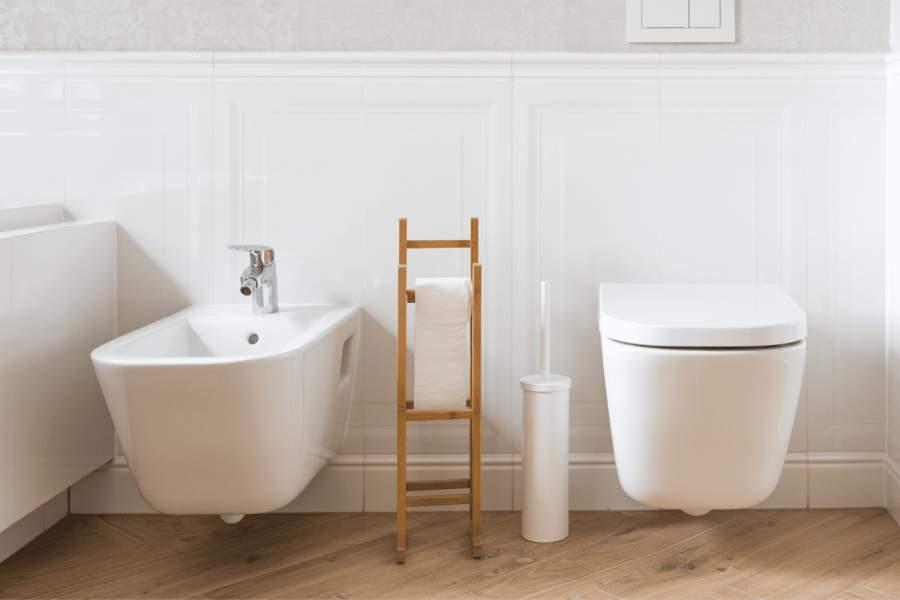Bidets are an alternative to toilet paper. They’re popular in Asia and Europe but have yet to catch on in America. There are a few different types, ranging from portable bidets and handheld bidet sprayers to bidet seats or high-end electric options from the likes of TOTO and Kohler.
Using water to wash is arguably more sanitary than just using paper. But are bidets eco-friendly?
Yes, bidets are eco-friendly. They use less water than toilet paper, and no trees are cut down to make them. Plus, they last a lot longer than toilet paper. Bidets also place less stress on sewer systems because there’s less solid waste to deal with.
Bidets vs Toilet Paper
The main question when it comes to the sustainability of bidets is how they compare to toilet paper. After all, if you don’t use a bidet, you’re going to need to clean up somehow…
In this article, I break the facts down one by one to look at the complete lifecycle for both bidets and toilet paper. Some areas are less clear cut than others, but it’s good to be armed with all the facts.
Trees
Everyone knows that toilet paper is made using trees, but did you know just how many?
Americans love toilet paper. According to Statista, each American uses an average of 28 lbs of toilet paper per year – the most of any country.
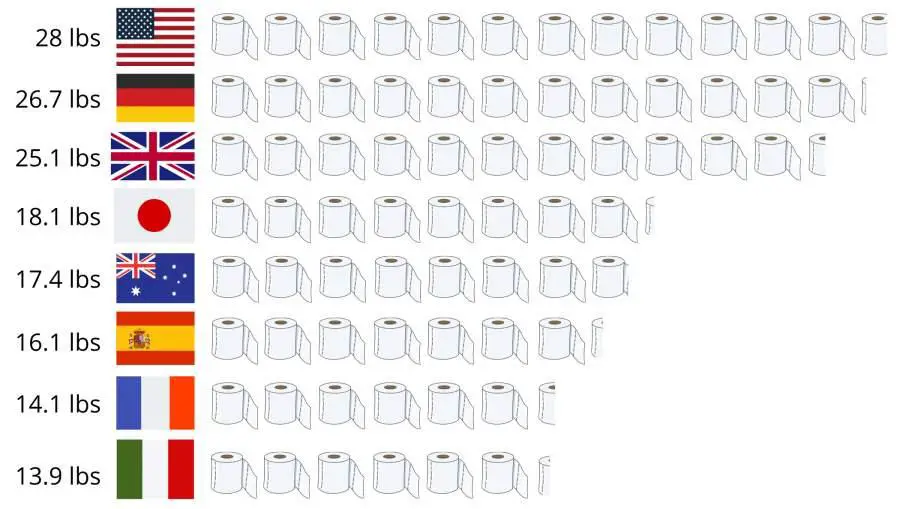
Germany follows with 26.7 lbs, and the UK is third with just shy over 25 lbs. Other European countries trail far behind. French and Italian citizens only use around 14 lbs of toilet paper per year.
Over a single person’s lifetime, 28 lbs of toilet paper per year equates to 384 trees being cut down.
Bidets, on the other hand, use no trees. If you don’t use any toilet paper with your bidet, you’ll save hundreds of trees from being cut down during your lifetime. Even reducing your usage to 1-2 sheets of paper to dry yourself off will significantly cut down your consumption.
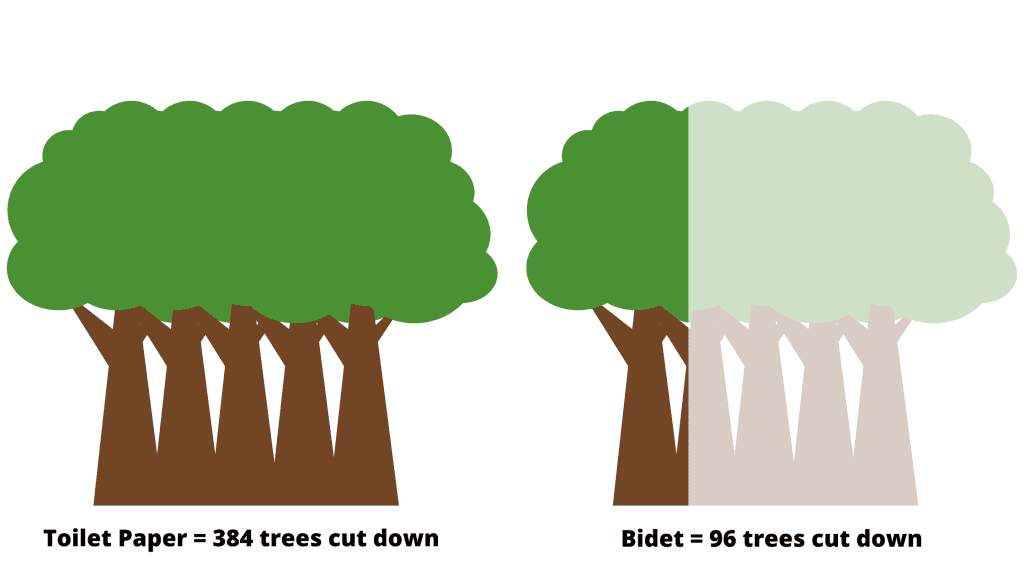
According to blue bidet, using a bidet will cut your toilet paper needs by up to 75%. That’s 288 trees saved.
And if you use recycled toilet paper – even better, but I talk in more detail about this later on.
Another option is to use a family cloth, this prevents the need for toilet paper altogether. A family cloth is a small towel that you can re-use over and over just as you would a towel after showering. Since the bidet has done the cleaning, the cloth shouldn’t get too dirty.
Water
Okay, so the trees aren’t being cut down. But what about water? Isn’t that just as important? Does using a bidet mean you’ll use a lot more water?
This is a fair point – but you might be surprised to discover that bidets use far less water than toilet paper.
To make one roll of toilet paper, you need around 37 gallons of water. Water is used to clean and prepare the pulp, and additional water is wasted as it becomes polluted with the chemicals used to bleach the paper and make it white.
According to MIT, the average roll of toilet paper weighs 0.5 lbs. If the average American uses 28lbs per year, that’s 56 rolls a year.
56 rolls of toilet paper in a year means 2072 gallons of water per year.
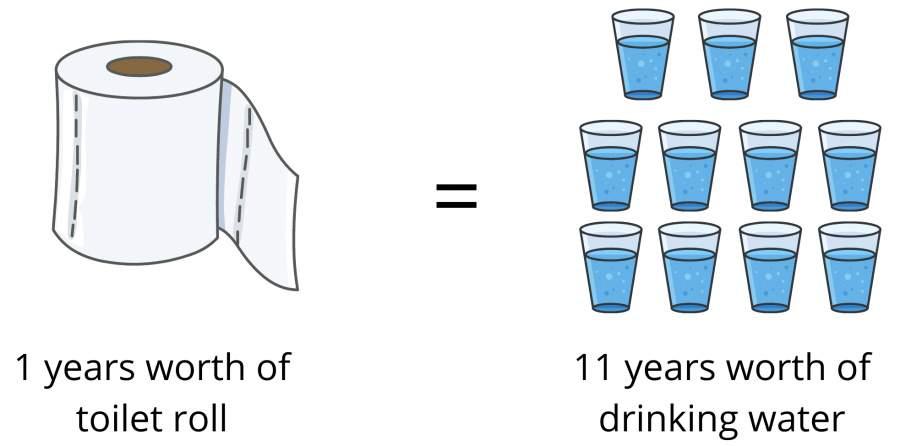
That’s enough drinking water for 4144 days, or 11 years (assuming you drink the recommended half a gallon a day).
The average flow rate on a bidet is 0.13 gallons per minute. According to Bio Bidet, most people use their bidet for 15-25 seconds. Even when rounded up to 30 seconds and allowing another 30 seconds for the bidets’ self-cleaning function, this makes the average use around a minute long.
That’s 0.13 gallons per use.
In a 24 hour period the average person will use the toilet 6.5 times per day.
For simplicity, let’s assume you use the bidet every time you use the toilet, although this won’t be true for males, making this an overestimate. That’s approximately 0.8 gallons of water per day, or 300 gallons of water per year.
2027 gallons per year for toilet paper vs 300 gallons of water per year for a bidet. This bidet wins on this front hands down.
Bidet manufacturing
I’ve focused a lot on toilet paper manufacturing above, but what about how bidets are made?
Bidet manufacturing is a much less controversial topic than toilet paper manufacturing since it doesn’t involve trees and the life of the product is so much longer. However, this means that not much is known about the ins and outs of it.
Most bidets are made from plastic with metal parts. Plastic, as you know, isn’t great for the environment, but bidets aren’t single-use products, so the use of plastic is more justified.
If you’re trying to avoid plastic, you can opt for a stainless steel bidet hose instead. Or this all-metal bidet attachment from USABidet.
Shipping
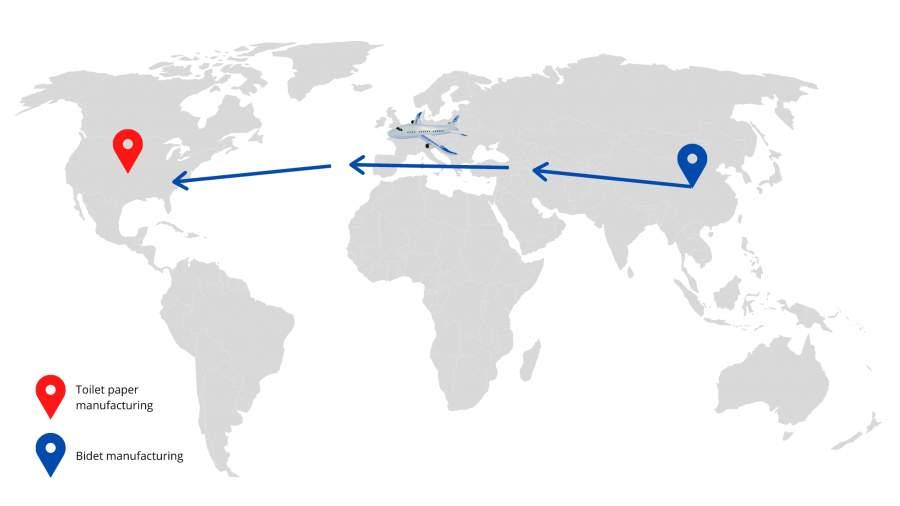
Around 90% of toilet paper purchased in the US is made in America. This is a good thing because it means the energy used and emissions due to shipping are minimized.
Most bidets are made in China or South Korea, a long way from the United States. The shipping of the bidet over to the USA will incur a heavy carbon footprint tax.
However, once you have the bidet in your possession, you shouldn’t need to buy another one for a good number of years. There’s a heavy initial impact, but this becomes less significant the longer you keep the bidet.
Whereas toilet paper is a regular purchase, so you need to consider the additive environmental cost.
If you buy your toilet paper in bulk and opt for non-plastic packaging, this will be much better for the environment than only buying a few rolls at a time.
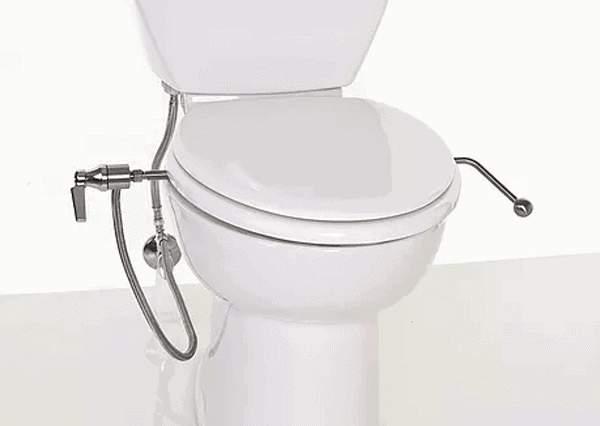
Buying an American-made bidet is a great solution if you’re looking to cut down on the miles the product has to travel before it reaches you.
I found two options from USABidet: the H-1 bidet, and the H-2 bidet (pictured above). Both versions are also made from 100% stainless steel – no plastic!
But the design is quite different from normal bidets. This might make it harder to use, especially if you have limited movements, such as larger users or postpartum mums.
Electricity
To make a roll of toilet paper, you need around 1.3 kWh. If you use 56 rolls a year, that’s 72.8 kWh per year.
Bidets come in electric and non-electric versions. The non-electric bidets feed off your house water supply and use no power.
However, the fancier bidets require electricity to power things such as heated seats, air dryers, and an unlimited hot water supply.
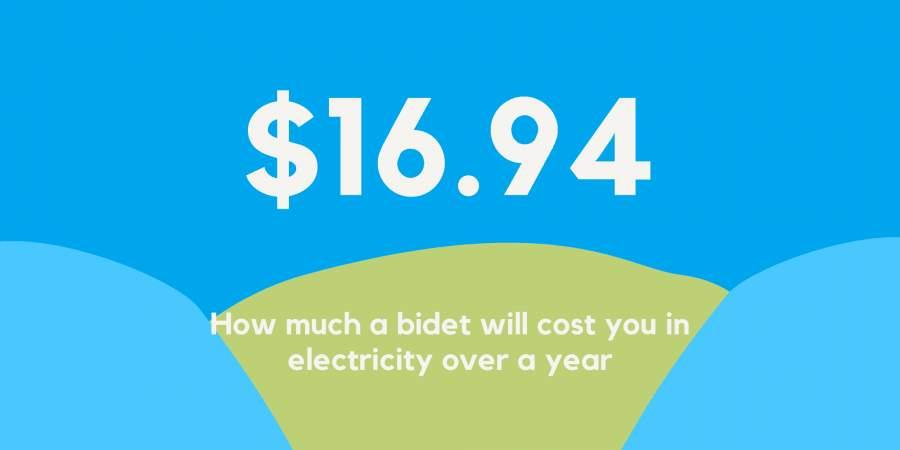
According to BioBidet, average consumption is around 211.70 kWh per year. This will vary considerably depending on the size of your household.
A lone person who uses the lowest heater settings will use less electricity than a family of four that uses the highest power settings.
Both these numbers are fairly minimal and nothing to be concerned about. 211 kWh will only cost around $17 over the course of an entire year.
But if you have an electric bidet and want to minimize the electrical output here’s my advice:
- Opt for a tankless heating method. Tankless heated means water is only heated as and when you need it, rather than having a constantly heated reservoir.
- Turn eco-mode on. Eco-mode learns when you don’t use the bidet as often (such as at nighttime) and turns some features off to save electricity.
Disposal
When you flush the toilet, it can be easy to forget about the waste. But what really happens when you flush, and does it have any environmental impact?
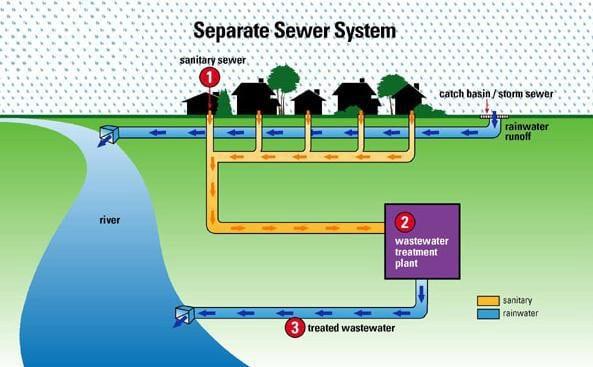
When you flush the toilet, everything you flush makes its way into the sewage system and gets carried along to a sewer treatment plant.
Toilet paper is well designed in that it breaks down very quickly in water and won’t block your pipes. By the time your flush has reached the sewage plant, the toilet paper will have completely disintegrated.
The watery sludge that’s left over is treated and cleaned so the water can be returned to the environment or used as reclaimed water. The solid waste, made up of everything that isn’t water, including the disintegrated toilet paper, is either:
- Sent to landfill, this is most common
- Sold as biosolids and used as fertilizer for agricultural land. As the waste could contain toxic elements, it’s not spread on land growing things for human consumption
- Incinerated. This reduces the volume of waste, but the ash still needs to be disposed of
Ocean dumping used to be common practice, but this is now prohibited in the USA. None of the above three options are particularly desirable, but the waste needs to be dealt with somehow.
The more toilet paper we flush, the more solid waste we create that needs to be disposed of. If we can reduce the amount we flush, that will go a long way to helping minimize waste.
Using a bidet is one way to do this. Bidets result in a 75% reduction in toilet paper use. This would significantly reduce the stress on sewer treatment plants by reducing the amount of solid waste. The only thing you flush with a bidet is more water. And this water can go on to be reused after being treated.
To avoid flushing altogether why not look into composting toilets? They take your waste and turn it into fertilizer you can use in your garden. And best of all, you can even install a bidet on your composting toilet too.
One downside to bidets is that they’re not biodegradable once they reach the end of their life. Perhaps recycling would be an option depending on the bidet you have, but the bidet will most likely end up in a landfill.
If the bidet seems broken always try to fix it before you throw it away. Buying a replacement part is much better than getting a brand new unit.
What about recycled toilet paper?
Recycled toilet paper is much much better for the environment than traditional toilet paper.
According to an NRDC (National Resources Defense Council) report, recycled paper needs ½ as much water as virgin toilet paper and releases only ⅓ of the greenhouse gases. These are just two of the benefits – there are a load more.
But in 2009 the New York Times stated that only 2% of the toilet paper we use was made from 100% recycled content. This may well have increased over time, but not by anything significant.
Why isn’t recycled paper more popular? The reason is softness.
The plush toilet paper Americans have become accustomed to can only come from virgin pulp. And it seems quite a few Americans are unwilling to give up that softness.
If you’re not particularly fussy about how soft your toilet paper is, recycled paper is a great eco-friendly option. But if you aren’t, a bidet is best. Just like with high-quality soft toilet paper, there’s no need to worry about irritation with a bidet.
Another thing to consider is bamboo toilet paper.
I feature a few bamboo options in my guide to sustainable toilet paper because it tends to be softer than recycled paper. But using virgin bamboo pulp is not as good as using recycled materials.
Bidet vs wet wipes
Another alternative to toilet paper is wet wipes. These represent a mix between a bidet and toilet paper. Washing you with both moisture and paper. But are they good for the environment?
Sadly, no. Most wet wipes contain plastics. By using a wet wipe and then disposing of it, you’re adding to the plastic pollution problem. Plastics don’t readily decompose in the environment and then go on to pollute our eco-systems with microplastics.
When you flush a wet wipe down the toilet, it doesn’t break down in the same way toilet paper does. Flush too many wet wipes and you risk blocking the sewer pipes. Water UK estimated that wet wipes make up 93% of the material in blockages.
Blocked sewer pipes lead to a whole host of problems and cost a lot of money to fix. Here’s a video showing you a blockage (otherwise known as a fatberg) in North Dakota.
Even wipes that claim to be flushable often aren’t and can still lead to blockages. Manufacturers tend to use vigorous tests to determine the ‘flushability’ of their wipes. The environment they test their wipes in is more similar to a washing machine than a sewer pipe.
Also, remember that flushable doesn’t mean eco-friendly. Flushable wipes are still made with plastic, so don’t take away the microplastic problem.
So if you can’t flush wet wipes down the toilet, that means you’re left with no alternative but to send them to landfill where they’ll likely sit for hundreds of years.
What about compostable wet wipes?
Due to more scrutiny around microplastics, a new type of wet wipe has emerged. Biodegradable wet wipes.
These wipes are made with natural materials that break down into non-toxic elements that don’t harm the environment. However, you need to be careful to avoid being greenwashed (this can be tricky).
Unlike toilet paper, which is easily biodegradable, not all compostable wipes will breakdown in your home compost pile. Some of them will only break down in a specialized environment.
To be labeled as compostable, something only needs to prove that it will breakdown in an industrial composting facility. Industrial facilities reach much higher temperatures than home compost piles, meaning they can deal with ‘harder’ materials.
Not everyone has easy access to an industrial composting facility. And if you send a compostable wet wipe to landfill rather than the industrial facility, it’ll take years to break down.
To avoid this, look for wet wipes that are home compostable, meaning they’ll break down much more readily.
Another thing to watch out for are wipes made of rayon or viscose.
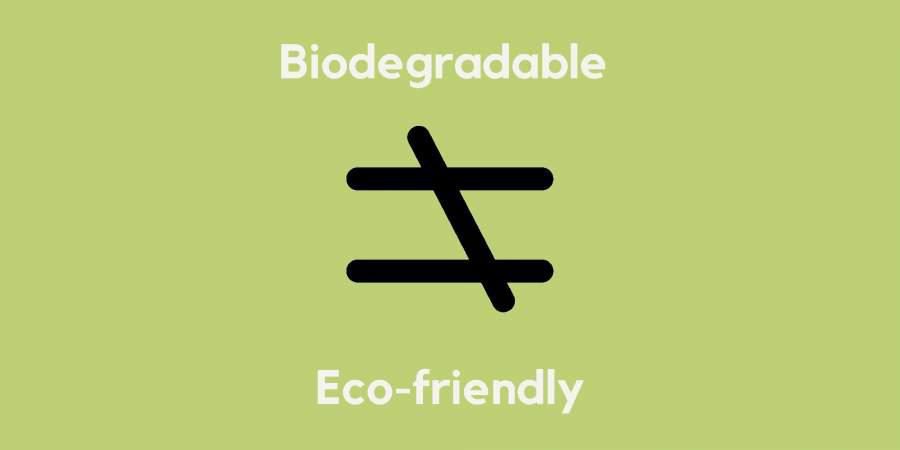
Rayon and viscose are derived from bamboo, a sustainable raw material, and classed as a biodegradable material. However, the process to make rayon or viscose is far from eco-friendly.
Rawganic and Natracare use cotton to produce their wipes. Cotton tends to be home compostable, but make sure the cotton used is organic. Another option is wood pulp, but again make sure the pulp has come from a sustainably managed forest. Eco by Naty uses wood pulp for their wipes.
You can read more about cotton and bamboo in my article on the sustainability of cotton.
Overall, compostable wet wipes are natural and so better for the environment than plastic wipes. But make sure you do your research before you buy.
Summary
Describing something as eco-friendly is never straightforward. However, bidets help to replace something that is a lot less sustainable (toilet paper). By default, this makes the bidet the eco-friendly option.
So if you’re looking to green up your toilet routine, investing in a bidet is a fantastic solution that’ll not only save on trees but water and landfill too.
